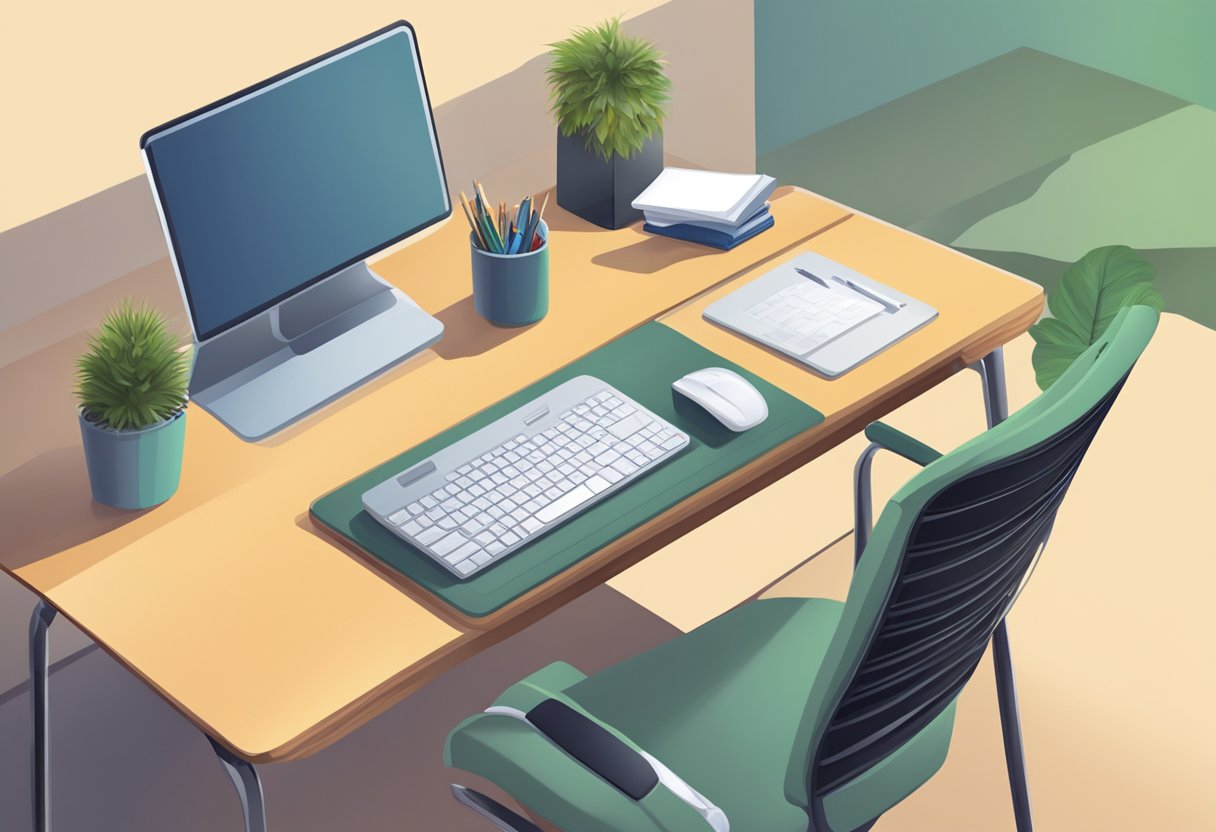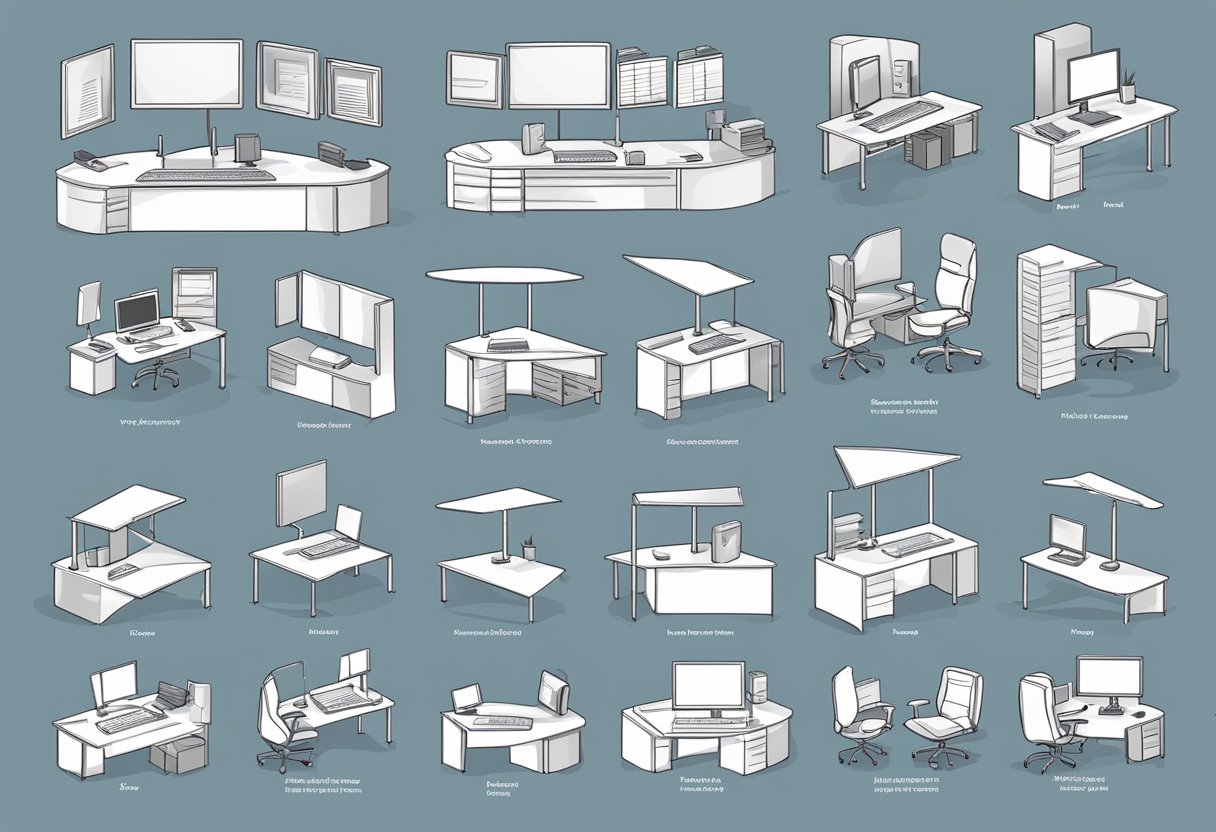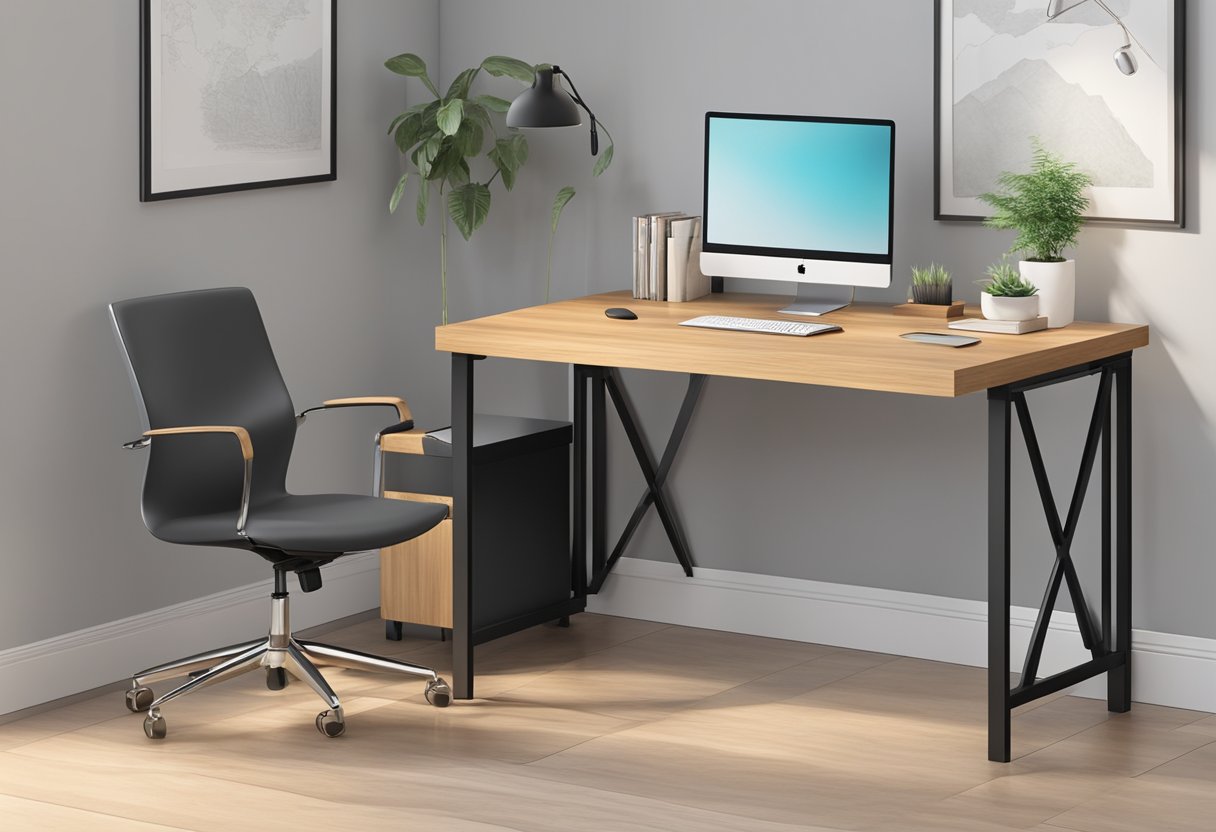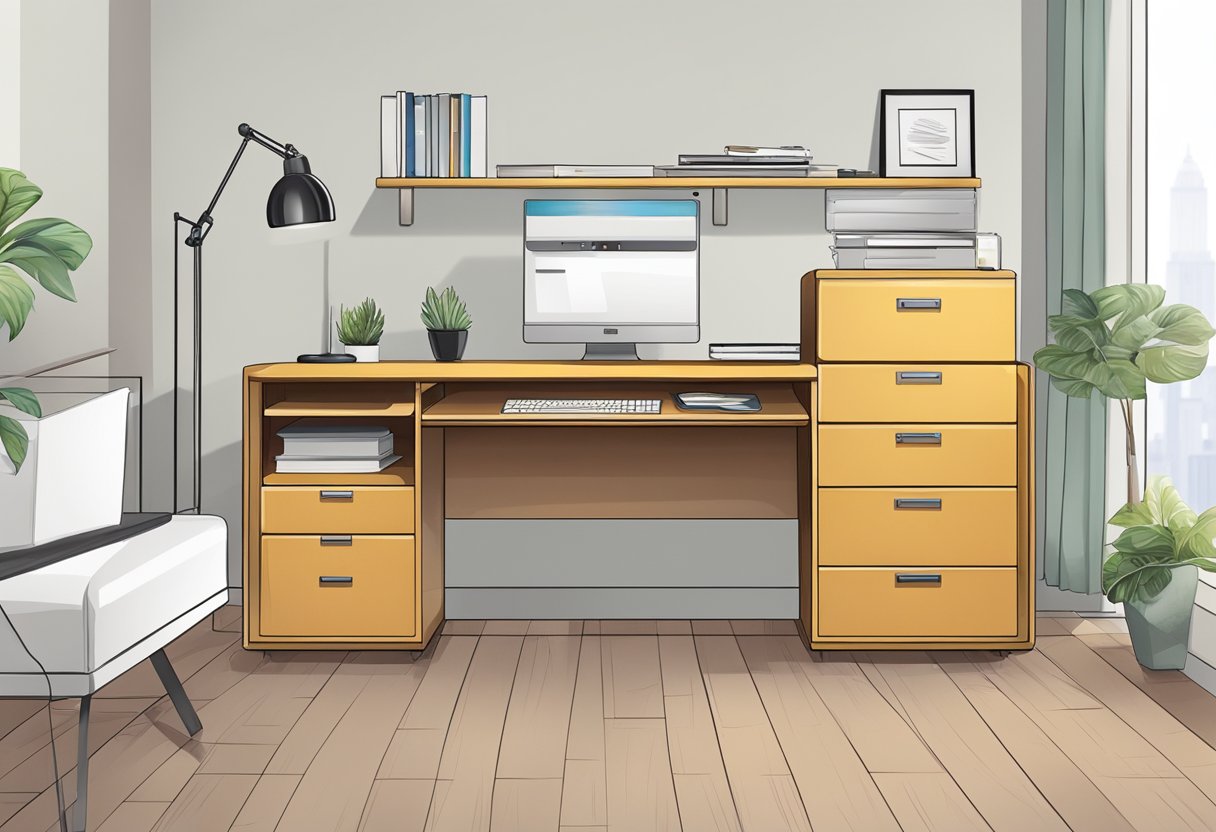- You are here:
- Home »
- Desk Tips »
- What Is the Best Shape for a Desk? A Comprehensive Guide
What Is the Best Shape for a Desk? A Comprehensive Guide
As an Amazon Associate I earn from qualifying purchases.
When it comes to choosing a desk, many factors come into play. One of the most important considerations is the shape of the desk. The shape of a desk can impact the overall functionality and comfort of the workspace, as well as the aesthetic appeal. In this article, we will explore the different shapes of desks and help you determine which one is the best fit for your needs.

Understanding Desk Shapes
Desks come in a variety of shapes, each with its own unique benefits and drawbacks. Some of the most common shapes include rectangular, L-shaped, U-shaped, and circular. Rectangular desks are the most traditional and versatile option, while L-shaped desks provide additional surface area and storage space. U-shaped desks offer the most workspace and are ideal for those who need to spread out, while circular desks can create a more collaborative and social environment. By understanding the different shapes of desks, you can make an informed decision about which one is right for you.
Key Takeaways
- The shape of a desk can impact the overall functionality and comfort of the workspace.
- Common desk shapes include rectangular, L-shaped, U-shaped, and circular.
- By understanding the different shapes of desks, you can make an informed decision about which one is right for you.
Understanding Desk Shapes

When it comes to choosing the perfect desk, the shape is an important factor to consider. The shape of your desk can affect your productivity and comfort, so it’s essential to choose the right one for your needs.
Rectangular Desk
A rectangular desk is the most common shape for a workspace. It provides ample space for multitasking and allows you to spread out your work materials. It’s also easy to fit into any room, making it a versatile choice.
L-Shaped Desk
If you need more workspace, an L-shaped desk might be the right choice for you. It provides a larger surface area and allows you to separate your work into different zones. This type of desk is perfect for multitasking and can accommodate multiple monitors or other equipment.
Corner Desk
A corner desk is a space-saving option that can maximize your workspace while taking up less room. It’s perfect for smaller rooms or offices where space is limited. A corner desk can also help you stay organized by providing designated areas for different tasks.
No matter which shape you choose, it’s important to consider the size of your workspace and your specific needs. A desk that’s too small or too large can affect your productivity and comfort. Make sure to measure your workspace and choose a desk that fits your needs.
In conclusion, understanding desk shapes is essential to choosing the right desk for your workspace. Whether you need a rectangular desk for multitasking or an L-shaped desk for extra workspace, there’s a desk shape that’s perfect for you.
Materials and Construction

The materials and construction of a desk play a crucial role in determining its durability, functionality, and overall aesthetic appeal. When selecting the best shape for your desk, it’s essential to consider the materials and construction options available to you.
Wood is a popular material for desks because of its durability and natural beauty. Solid pine wood and acacia veneer are two common types of wood used in desk construction. Solid pine wood is a sturdy and affordable option, while acacia veneer provides a more refined and elegant look. Engineered wood, particleboard, and MDF are other wood-based materials that are often used in desk construction. These materials are cost-effective and durable but may not have the same natural look and feel as solid wood.
Steel and metal are also popular materials for desk construction. These materials are sturdy and can withstand heavy use without showing signs of wear and tear. Glass is another option for desk construction, providing a sleek and modern look. However, glass desks may not be as durable as other materials and can be prone to scratches and cracks.
Laminate is a popular material for desk surfaces, providing a durable and easy-to-clean surface. It is often used in combination with other materials such as wood or metal to create a sturdy and functional desk.
When it comes to construction, it’s important to consider the quality of the joints and connections used to hold the desk together. A well-constructed desk should have sturdy joints and connections that can withstand regular use without coming loose or breaking.
In summary, the best shape for your desk will depend on your personal preferences and needs. However, by considering the materials and construction options available to you, you can make an informed decision that will result in a durable and functional desk that meets your needs.
Design and Functionality

When it comes to choosing the best shape for your desk, it’s important to consider both the design and functionality of the desk. A desk that looks great but doesn’t meet your needs won’t be very useful, and a desk that is highly functional but doesn’t fit your style may not be very inspiring to work at.
One key aspect of desk design is storage. Whether you need drawers, shelves, a keyboard tray, or other storage options, it’s important to choose a desk that provides the storage space you need to stay organized and productive. A desk with built-in storage options like cabinets, cubbies, or a hutch can be a great way to keep your workspace clutter-free and your supplies within easy reach.
Another important consideration is ergonomics. A desk that is the right height for you and your office chair can help prevent discomfort and injury, and adjustable foot pads can help you find the perfect position for your feet. A monitor stand can also be a useful addition to your desk, helping to reduce neck and eye strain by positioning your screen at the right height.
Cable management is also an important feature to consider. A desk with grommets or other outlets can help keep cords organized and out of the way, reducing clutter and tripping hazards. A desk with a built-in USB hub can also be a convenient way to charge your devices and keep them close at hand.
Ultimately, the best shape for your desk will depend on your individual needs and preferences. Whether you need a workstation with ample storage space, a desk with a filing cabinet and CPU stand, or a customizable desk that can be tailored to your exact specifications, there are plenty of options available to help you create a productive workspace that meets your needs.
Choosing the Right Desk for Your Needs
https://www.youtube.com/watch?v=l8TidmtLwuk&embed=true
When it comes to choosing the right desk for your needs, there are a lot of factors to consider. Whether you’re looking for a standing desk, a home office desk, or a gaming desk, there are a few things you should keep in mind.
First and foremost, you’ll want to consider the surface area of the desk. If you have a lot of monitors or equipment, you’ll need a desk with enough space to accommodate everything. On the other hand, if you’re working with limited space, you’ll want to look for a desk that is more minimalist and space-saving.
Another important factor to consider is adjustability. If you’re going to be spending a lot of time at your desk, you’ll want to make sure it’s comfortable and ergonomic. Look for desks with adjustable foot pads and office chairs that can be adjusted to your height.
If you’re on a budget, there are plenty of affordable options out there. You can find quality desks in a variety of styles and colors, from wooden desks to carbon fiber desks. Just be sure to check the weight capacity if you’re planning on using the desk for multiple screens or with two or more people.
For those who work from home, you may want to consider a desk with built-in hooks or a cup holder for added convenience. And if you’re worried about spills or accidents, look for a desk that is waterproof.
Ultimately, the best shape for your desk will depend on your specific needs and preferences. Take the time to consider all of the factors and choose a desk that will help you be productive and comfortable.
Frequently Asked Questions

Which desk shape is ideal for maximizing productivity?
The desk shape that is ideal for maximizing productivity depends on your personal preferences and work style. Some people prefer a straight desk, while others prefer an L-shaped desk or a curved desk. It’s important to choose a desk shape that allows you to work comfortably and efficiently.
What are the benefits of a curved desk over a straight desk?
A curved desk can provide a more ergonomic work surface, as it allows you to position your body closer to the desk. This can help reduce strain on your neck, shoulders, and back. Additionally, a curved desk can create a more comfortable and inviting workspace, as it can help soften the look and feel of a room.
What factors should I consider when choosing a desk shape?
When choosing a desk shape, consider factors such as the size and layout of your workspace, your work style and preferences, and the type of work you will be doing. It’s also important to consider the amount of storage and organization you need, as well as any special features or accessories you may require.
What are the advantages of an L-shaped desk?
An L-shaped desk can provide a large work surface, as well as ample storage and organization options. This type of desk is ideal for those who need to multitask or work on multiple projects at once. Additionally, an L-shaped desk can help create a more efficient and productive workspace by allowing you to easily switch between tasks.
What is the best desk shape for a small office?
For a small office, a compact desk shape such as a straight desk or a corner desk may be the best option. These desk shapes can provide a functional workspace without taking up too much room. Additionally, a compact desk can help create a more organized and streamlined workspace by minimizing clutter and maximizing storage options.
How does the shape of a desk impact organization and storage?
The shape of a desk can have a significant impact on organization and storage. For example, an L-shaped desk can provide more storage and organization options than a straight desk, while a corner desk can help maximize storage space in a small office. Additionally, a curved desk can help create a more open and inviting workspace, which can help reduce clutter and improve organization.
Amazon and the Amazon logo are trademarks of Amazon.com, Inc, or its affiliates.
Related Posts
03 Dec, 2023Home File Organization Categories: A Comprehensive Guide
03 Dec, 2023How to Organize Papers Without a Filing Cabinet: Simple Tips and Tricks
03 Dec, 2023Does a Corner Desk Have to Be in a Corner? Exploring the Placement Options
03 Dec, 2023How to Organize a Desk Without Drawers: Tips and Tricks
21 Nov, 2023Ergonomic Height for Desk: How to Set it Up for Optimal Comfort and Health

